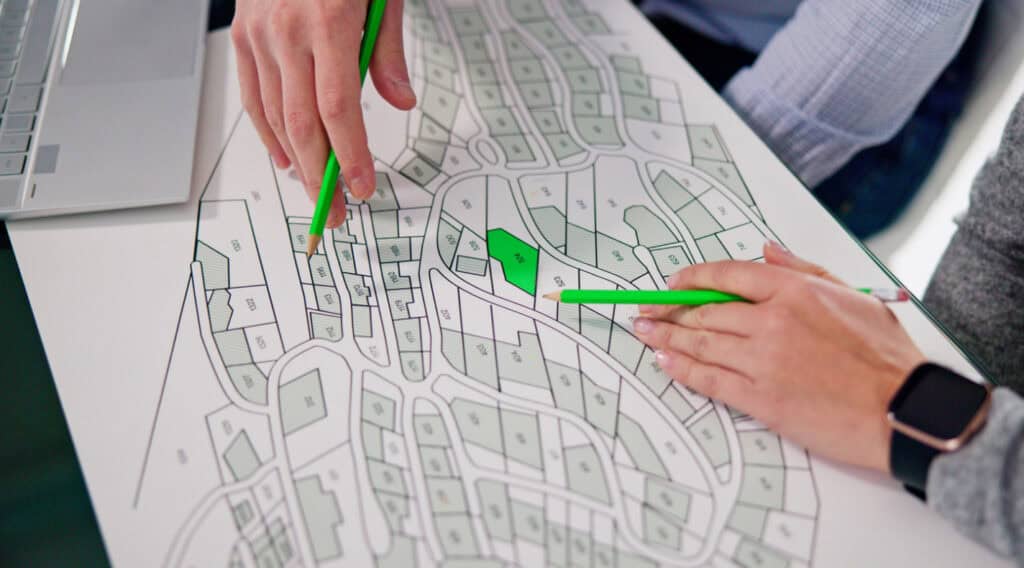When it comes to plotting software for deeds, there are two main options: offline and online solutions. In this article, we will provide a comparative analysis of these two types of software, highlighting the key features and benefits of each.
Table of Contents
Whether you’re a seasoned land surveyor or someone who occasionally needs to plot a deed, this post will help you make an informed choice.

1. Offline Plotting Software:
Offline plotting software for deeds refers to programs that are installed directly onto a computer or other electronic device. These tools offer a range of features designed specifically for deed plotting. Here are some advantages of using offline plotting software:
Accuracy and Precision:
Offline software is typically known for its high level of accuracy and precision in producing plot diagrams. These programs often have advanced measurement and calculation capabilities, allowing users to easily ensure they meet the required standards.

Flexibility and Convenience:
With offline plotting software, users have complete control over their work environment. This means that even without access to an internet connection, you can continue working on your plots without interruption. This flexibility is particularly useful in remote areas or situations where online access may be limited or costly.
Enhanced Security:
Some individuals may be concerned about their data security when using online services. Offline plotting software eliminates these concerns by keeping all data stored locally on personal devices rather than in the cloud.
2. Online Plotting Software:
Online plotting software works through cloud-based platforms accessible via the internet. These programs offer several advantages over traditional offline solutions:
Collaboration Potential:
One key advantage of online plotting software is the ability to collaborate with teammates or colleagues in real time, regardless of their location. This feature enables multiple people to work together on the same plot simultaneously, streamlining workflows tremendously.
Automatic Updates:
With online solutions, users don’t need to manually update their software since updates are automatically deployed by the service provider on their servers. This ensures that users always have the latest features and improvements without any additional effort or cost.
Data Backup and Accessibility:
By storing your plotted deeds in the cloud, online platforms provide instantaneous access to your work from any device with an internet connection. Moreover, these online services often have built-in backup systems, ensuring that your data is safe even in the event of computer failure or other unforeseen circumstances.
3. Ease of Use and Learning Curve:
Offline plotting software tends to have a steeper learning curve compared to online solutions. This is mainly because offline software often offers advanced features and functionalities that require some familiarity and training to use effectively.
On the other hand, online plotting software tends to prioritize user-friendliness with intuitive interfaces and easy-to-understand workflows. This makes online options more accessible for users who may not have extensive technical knowledge or experience.

4. Cost Considerations:
Cost is an important factor to consider when choosing plotting software. Offline solutions generally require a one-time purchase or licensing fee, with no recurring costs beyond occasional updates or upgrades.
Some offline software may also offer different price tiers based on the level of functionality required by the user. On the other hand, online plotting software typically follows a subscription-based pricing model, requiring monthly or annual payments for access to the platform’s features.
While this regular payment structure can be convenient for businesses with flexible budgets, it may not be cost-effective for individuals or those who only require sporadic use of plotting software.
5. Customer Support and Updates:
Offline plotting software often comes with dedicated customer support from the developer or vendor, ensuring that users receive timely assistance when encountering any issues or difficulties. Additionally, offline solutions may come with regular updates or new versions released over time to improve functionality and address bugs.
For online platforms, customer support is usually provided through email, chat support systems, or discussion forums, where users can seek help from vendors and other community members.
As described earlier, online solutions benefit from seamless updates, which are implemented by the service provider without requiring any manual downloads or installations from individual users.
Final Words on Using An Online Plotting Software
In summary, both offline and online plotting software options provide unique benefits depending on individual needs and preferences. Offline software offers accuracy, flexibility, and heightened security, while online solutions excel at collaboration, automatic updates, and accessibility.
Ultimately, it is essential to consider factors such as specific plotting requirements, team collaboration needs, data security concerns, and the available internet connection.
By weighing these considerations against the features outlined for each type of software discussed above, users can make a well-informed decision about which solution will best suit their needs.



